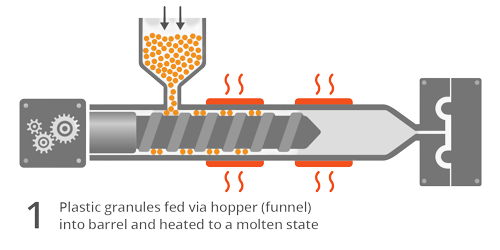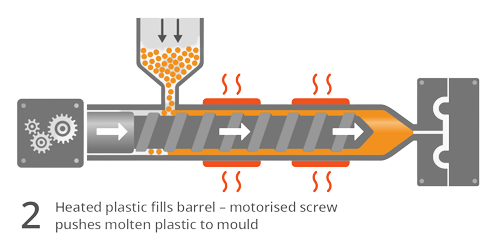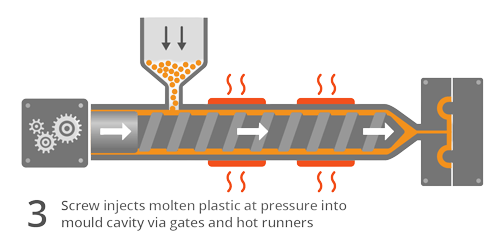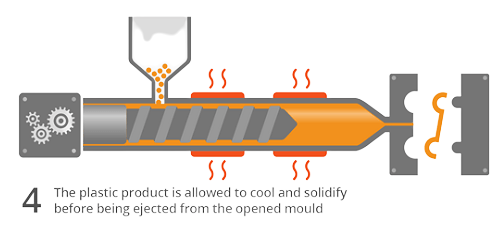Blow Moulding
Blow Moulding Applications
Cosmetics, scents, toiletries, hair care, skin care, personal hygiene, eye care, nail polishes, and makeup products are just a few examples of the applications. Bottles for personal care products can be made in a variety of sizes and shapes.
Blow Moulding process is simple & effective way of producing complex, intricate hollow shapes that are light weight and have excellent stiffness to weight ratios. Blow molding is a cost-effective alternative to injection molding, with both production and machinery being cheaper typically. Blow molding works well for products that are one single piece in mass volumes.
Because machinery expenses are often cheaper, blow moulding has lower costs than injection moulding. Blow moulding uses one-piece manufacturing, eliminating the need to join separate parts, and may make geometries that injection moulding cannot.
NEED FOR BLOW MOULDING
Advantages of Using
Plasmix Masterbatches for Blow Moulding Solutions
- Capability to handle complicated parts
- Rapid Productivity
- Increased Strength
- Tensile strength is increased
- Productivity is really high.
- Low Costs
A ONE STOP SOLUTION FOR BLOW MOLDING ISSUE / PROBLEMS
| Problems / Defects | Possible Causes | Suggested Remedies |
| Rough crystalline surface | Overheating of co-polymer | 1.Lower the temperature and enhance cooling to certain extent.Reduce Melt temperature below 200°C 2.Slow down extruder speed. |
| Great number of large gels | Overheating of co-polymer in blow moulding machine or grinder | 1.To dismantle head , screw & thoroughly clean. 2.Purging is needed |
| Contamination from highly incompatible resins, etc | 1.Some times polymer resins consists of foreign particles 2.Contamination by decomposed particles | 1.Inspect bags, hopper loader, grinder and all other parts wherein polymer is used. 2.Clean die and extruder to evacuate degraded material. 3.Cool the extruder before shut down. |
| Pin marks, bubbles or streaks in part | 1.Moisture | Dry resin at 60-70°C for an hour approx. |
| Cloudy or hazy part | 1.Contamination 2.Melt temperature too high / low 3.Mould temperature too low | 1.Dry resin at 60-70°C for an hour approx. 2.Adjust Melt temp between180-200°C(approx) 3.Adjust Mold temp between 25-35°C |
| Part dull in appearance | 1.Mould is not polished properly. 2.Mold finish is untidy 3.Improper Mould temperature | 1.Do polishing 2.Clean thoroughly and polish with Simichrome 3.Adjust Mould temperature between 25-35°C |
| Poor wall thickness distribution from top to bottom | 1.Parison necking down 2.Larger part periphery at top | 1.Parison programming to be done 2.Increase extrusion speed 3.Lower Melt temp 4.Invert mould if possible. |
| Poor wall thickness circumferentially | Non symetric part shape | 1..Shape the die to increase parison thickness in thin area. 2.Pre blow parison. 3.Use larger parison diameter. |
| Parison rupture or part “Blow out” | 1.Too large a blow up ratio. 2.Mould separation 3.Pinch-off too sharp | 1.Use larger die tooling. 2.Increase clamp pressure / decrease blow pressure 3.Provide wider pinch-off land. |
| Die lines | Untidy or damaged die | 1.Clean die land surfaces 2.Nicks or scratches in die or mandrel may have to be removed. 3.Check for foreign material 4.Streamline flow to eliminate die buildup |
| Problems/Defects | Possible Causes | Suggested Remedies |
| Parison “Doughnut” formation |
1.Mandrel temperature not adequate 2.Mandrel is at too high position. 3.Die face is untidy |
1.Allow mandrel to reach equilibrium with rest of system. 2.Lower Mandrel position slightly 3.Clean the die thoroughly |
| Parison length variations |
1.Cooling to extruder feed zone not turned on 2.Insufficient back pressure. 3.Extruder operating erratically. 4.Extruder slipping. |
1.Turn on air / water cooling to feed zone. 2.Increase Back pressure 3.Repair extruder and ensure smooth running. 4.Same as above. |
| Low part weight | Wall thickness of parison is too thin | Increase annular opening to make wall thickness to increase slightly. Make parision programming faster. |
| Part weight too heavy | 1.Wall thickness of parison is too high | 1.Decrease annular opening to make wall thickness to decrease. |
| Part not fully inflated | Blow air pressure inadequate |
1.Increase blow air pressure 2.Check for blocked air lines if any. |
| Blow needle not puncturing parison |
1.Insertion rate too slow 2.Needle stroke too short. 3.Needle is blunt |
1.Increase pressure to needle cylinder. 2.Lengthen stroke if possible. Install cylinder with longer stroke. 3.Sharpen needle to ensure good puncture. |
| Parison collapses inside mould | Blow air incorrectly timed out | Start blow air earlier in cycle. |
| Thinning or stretching at parting line |
1.Low blow pressure 2.Air entrapment inside |
1.Increase blow pressure. 2.Improve mould venting. |
| Poor wel at pinch off |
1.Mould temperature high 2.Mould closing speed is fast 3.Pinch off land too sharp |
1.Adjust Mold temp between 25-35°C 2.Increase Mould “Cushion” or decrease mould closing speed. 3.Widen pinch land , Dam up inch-off relief to thicken pinch weld. |
| Warpage |
1.Insufficient cooling 2.Non-uniform cooling 3.Cooling differential in thick & thin areas |
1.Provide good water flow in moulded channels 2.Increase cooling time. 3.Improve wall distribution of cooling channel. |



